>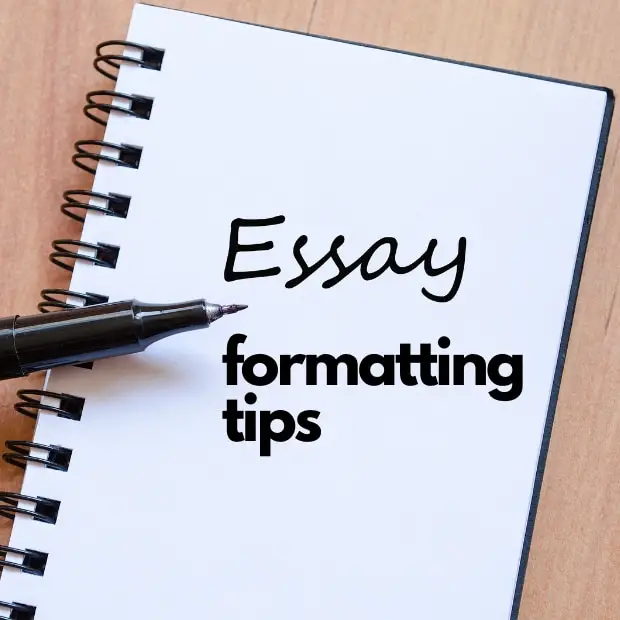
Writing a college essay is something that every student will have to do at one point or another, and guess what?
It doesn’t have to be difficult at all. Having the story and the writing talent is one thing, but structuring the essay is a skill you can easily learn with practice and repetition. In this article, you’ll find simple steps you can use to format your college essay like a pro.
What is an essay?
An Essay could either be a short or a long piece of writing which shows a person’s thoughts, ideas, or opinions on a subject. It can be formal or informal. To many students, writing an essay seems to be one of the toughest things to do, especially because it can determine the result of your college application. If you need more info on that, I highly recommend you read a book like A Professor’s Guide To Writing Essays. Writing a good essay is not as difficult as it may seem. Let’s look at types of essays and how to format them properly or check essay pro reviews if you’re not sure about how to proceed and would like to get some help.
Different types of essays and how to format them
The first step is deciding which kind of essay you want to write. It will determine the structure of content as there are various types of essays you can write. These include:
Narrative essay:
- This type of essay tells a story about an event or an experience.
- Its main purpose is to tell the tale interestingly and entertainingly.
- The focus is on creating a colorful world full of characters and personalities.
- You can make the story up, or you can write about true events (fiction vs. non-fiction).
- There’s a beginning, middle, and end (a resolution of the story).
- There’s dialogue, actions, thoughts, and feelings.
Here are some good examples of narrative essays.
How to format a narrative essay?
A narrative essay has a very simple format as it doesn’t belong to the formal writing category. You start with a title, then you proceed to an introduction, the beginning of the story, the middle events, the end of the story, and finish up with a conclusion. Here’s an example of what a narrative essay should look like:
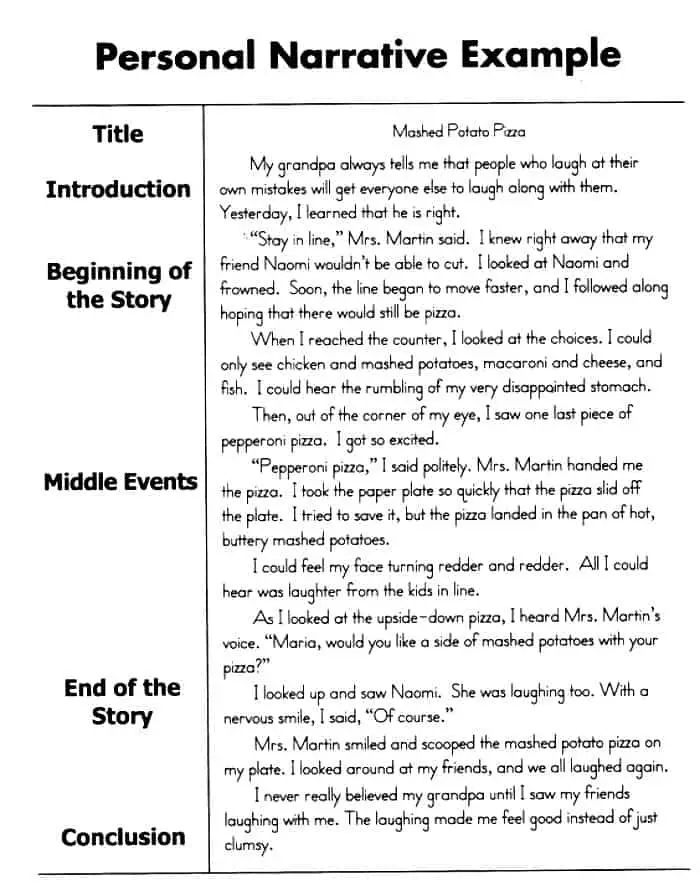
Persuasive (argumentative) essay:
- This is a type of essay where you try to convince the reader of something.
- There’s a firm opinion about a specific topic or issue.
- There are powerful reasons (arguments) to support the opinion.
- It has a call to action at the end. The reader has to be persuaded to change their worldview or start taking action.
- There is a lot of research, and logical reasoning involved.
Here are some good examples of persuasive essays.
How to format a persuasive essay?
The persuasive or argumentative essay contains five paragraphs. You start with an introduction in the next three paragraphs; you outline your arguments and give reasons to support them, and in the fifth paragraph, you finish with a conclusion. If you want to format it correctly, inspect the following example and try to emulate it.
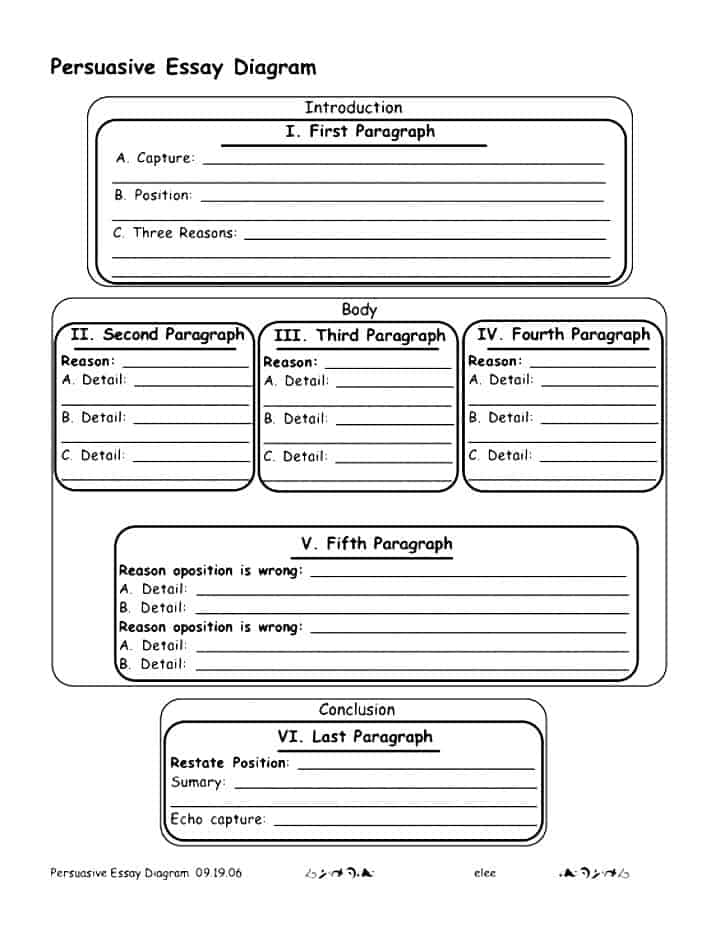
Descriptive essay:
- This is a type of essay that describes things, people, places, experiences, etc.
- It can belong to the world of fiction or non-fiction.
- It uses a lot of imagery, senses, smells, and word pictures.
- It awakens the imagination of the reader by providing vivid descriptions.
- It makes use of the five senses.
- It might include the reader as a part of the story.
Here are some good examples of descriptive essays.
How to format a descriptive essay?
The basic descriptive essay should have three to five paragraphs (depending on your assignment). It should be written in the present tense, from a third-person perspective. Here’s a simple example of how it should look:
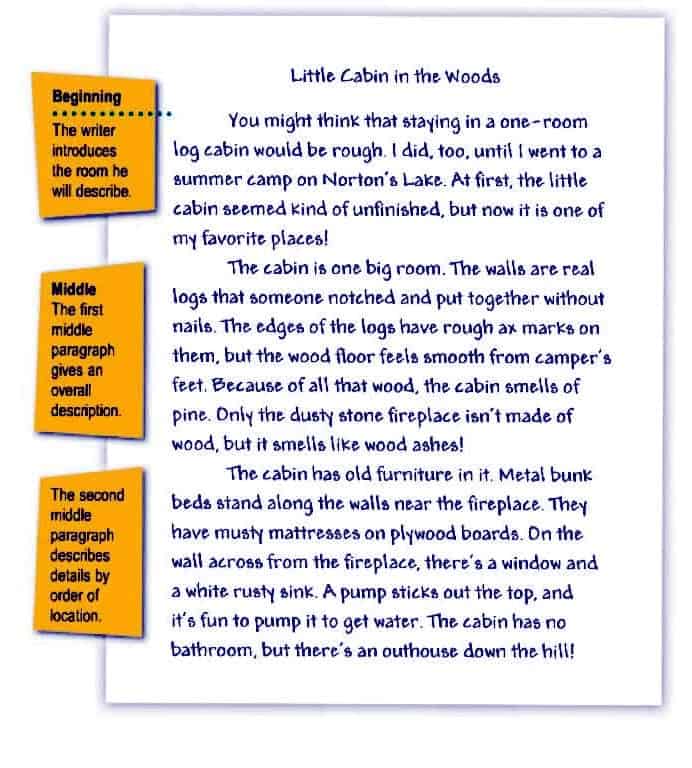
Expository essay:
- The main purpose of the essay is to inform and explain something to the reader.
- It deals with hard facts, statistics, logical arguments, and sound evidence.
- It has a clearly outlined principal topic.
- It goes from the general overview of the topic, down to the tiny details.
- It may include charts, graphs, captions, and images.
- It looks similar to the articles on my website.
Here are some good examples of expository essays.
How to format an expository essay?
Expository essays are usually more formal and follow a strict structure. They contain five paragraphs – the introduction, three body paragraphs, and end with a conclusion. Here’s a great example of an essay map you can use to guide you through the process:
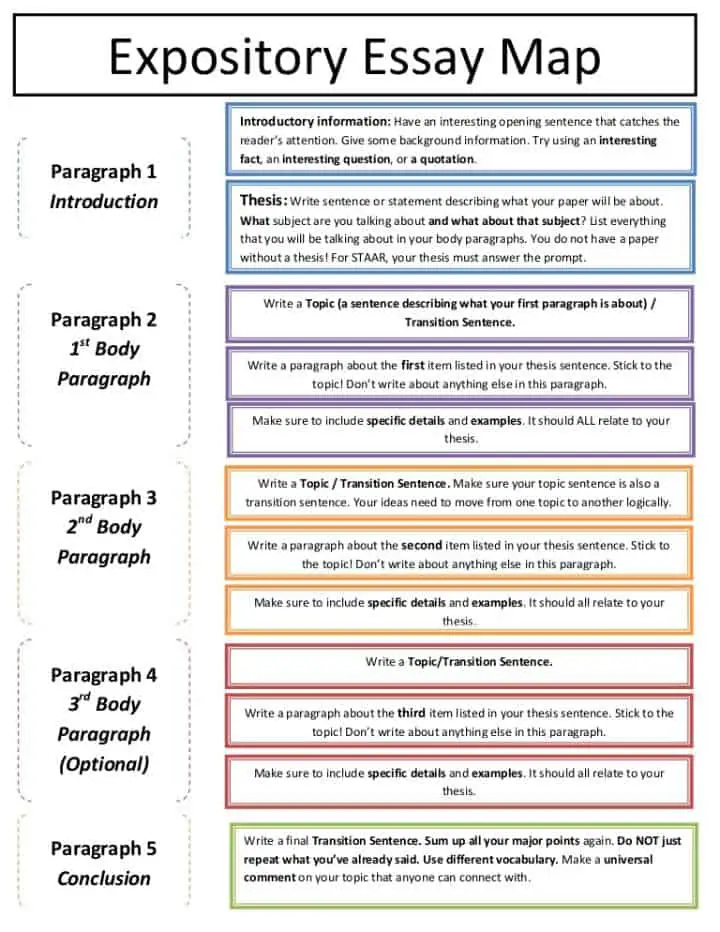
How To Format Your College Essay: 7 Best Tips
The guidelines for writing an essay are simple but often overlooked. The following formatting rules apply mostly to the standard five-paragraph college essay:
1. Keep it simple:
Keep it as simple as possible. Clear writing reflects clear thinking – and that’s what your teachers or the admissions committee will look for. Your style of writing must be consistent across the board. To impress your teacher, do not choke up your essay with big grammar or lofty words. This might be useful but often leads to boredom in assessing your essay.
2. Give your essay an enticing introduction:
This is probably the most important part of your essay. The introduction determines whether your teacher will read through you or she will fling it aside. The best thing to do is to strive to get your reader’s attention from the very start of your essay. Another important point is that you cut to the chase. Introduce your thesis or an argumentative statement at the very beginning.
3. Make sure you know what to include in the essay’s body:
The body of the essay is where you validate your thesis by providing persuasive arguments. You can break it down into three paragraphs. At the beginning of each paragraph, you share an argument, and in the latter part, you support it with evidence (preferably by citing reliable academic sources).
4. Take care of the conclusion:
Save the best for last. Make sure the concluding part of your essay is not “dry”. Keep the fun, the focus, and the precision until the last full stop. The conclusion should reiterate the focus of the essay and persuade the reader to take a specific type of action.
5. Arrangement – connect the sentences, arguments, and paragraphs to create a cohesive whole:
The organization of your text is another vital part of essay writing that can affect your grade a lot. See your essay body, with all the parts fitting together. When writing, make sure that your essay is connected, so it gives a complete picture and not a distorted one. The paragraphs should lead one to another accordingly.
6. Avoid boredom at all costs:
Avoid unnecessary repetitions in your essay. Make sure that it’s only filled with details that matter. Do not write unnecessary words just to accomplish the required word count. Make sure that the juicy bits are spattered all over your essay. This is the only way to keep your reader glued until the very end.
7. Give appropriate credits in the footnotes:
Never forget to attribute the deserved credit to whichever material you use in your writing. The footnotes should contain the sources you used as a reference in compiling the essay. Please check the guide for full information and examples about how to add footnotes appropriately. I hope that the information in this article will help you structure your essay in a better way. Just follow these basic guidelines and you can do no wrong. Next up, you may want to explore a guide on how to start a college scholarship essay.
Get your free PDF report: Download your guide to 100+ AI marketing tools and learn how to thrive as a marketer in the digital era.
Hey there, welcome to my blog! I'm a full-time entrepreneur building two companies, a digital marketer, and a content creator with 10+ years of experience. I started RafalReyzer.com to provide you with great tools and strategies you can use to become a proficient digital marketer and achieve freedom through online creativity. My site is a one-stop shop for digital marketers, and content enthusiasts who want to be independent, earn more money, and create beautiful things. Explore my journey here, and don't miss out on my AI Marketing Mastery online course.


